It’s like some kind of weird dream… I’m apparently back in Exhumed. Only, it’s not in the same room, and like, there’s a snake rolling a donut. I mean, it’s actually been almost two years since I accepted the invitation to rejoin, but we’ve had just a handful of shows since. Matt has had a record ready to record before I even joined, though. This last March, when I asked Matt when we would get down to practice new stuff, he informed me, actually, we were going ahead and recording . It had to be done before May. Oh, fuck. Okay, the dream became a nightmare.

Tracking instruments doesn’t have to be hard and it certainly doesn’t require a studio. Modern technology has made a lot of strides to let amateurish musicians sound like total pros. Just listen to how many synth-based John Carpenter rip off bands there are on Youtube and you’ll understand.
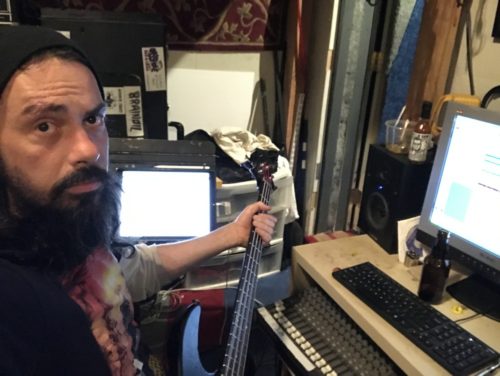
That seems like a lot going of screens to create the very little bass you’re ever likely to hear on any given death metal record. The front screen is our PC running Sonar 7, because hey, who needs new shit when the old shit pumps out the same old .wav’s just fine. To my left, my iPad, which I use to display the wonderful tablature Matt has created with Guitar Pro. Their app for iOS is beyond amazing and interfaces great with the desktop program. The tab was essential to get through a bunch of songs no one had ever shown me how to play. So was a good ear, for when Matt decided to not play what was on the tablature. Thanks, bud.
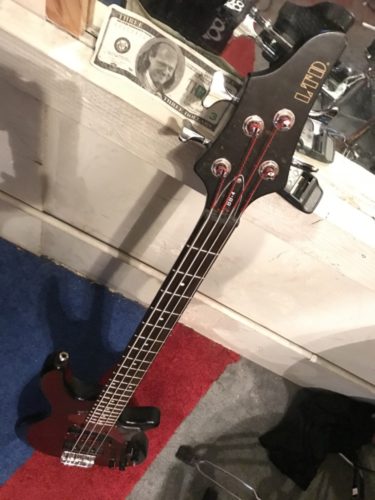
And here is my LTD BB-4, a model which has been unfortunately discontinued by the ESP guitar corporation. It was one of the more premium basses in the LTD line and I fucking love it. It’s loaded with Seymour Duncan Quarter-Pounders, easily the best and most transparent bass pickups ever invented. The neck is thin for some good speed playing, but not so small it feels like you’re whacking off G.G. Allin.
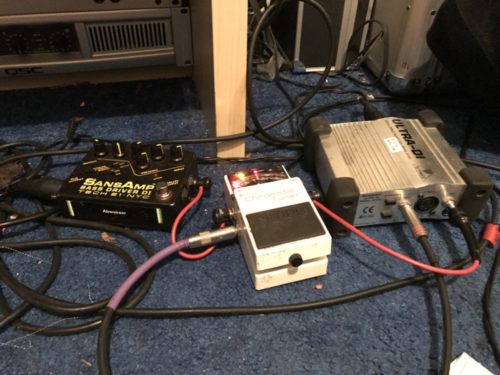
From the bass guitar, it’s a simple chain to get some good signal to record. Okay, I’m not gonna praise that DI, because it ain’t grand. I really need to upgrade to a good Radial DI. Anyway, the powered DI sends one signal for mixing or re-amping and another to the trusty BOSS TU-2 tuner. The TU-2 has pretty good buffer to split the signal again between two outputs. One goes to my Tech 21 Sansamp Bass Driver DI. That provides my overdriven signal and has a handy balanced-out for recording through a mixer. The other cord is running to my amp. I could’ve even mic’d that for a third bass track, but in this case, I used to drive some feedback for sustaining long notes.
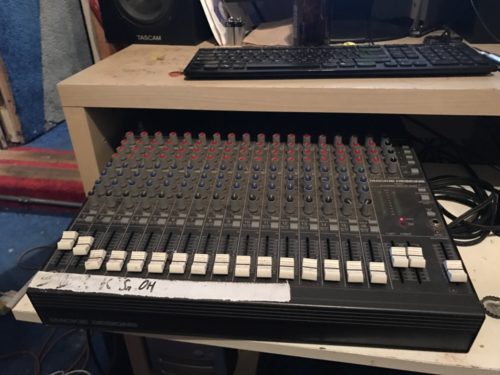
This is our Mackie CR1604 mixer. It’s a fucking workhorse. We use it for our PA and for recording. It has a lot of options, so I can use it as a basic analog mic-pre into the computer and, at the same time, isolate the computer output into powered monitors.
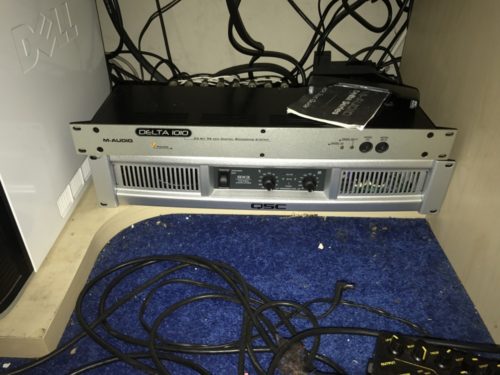
This is an M-Audio Delta 1010 external sound module. It has eight ins for recording. I really don’t know more about it other than it works. It records onto our computer and we got it for free. It takes some drivers and awhile to figure it out. But it can’t be that hard for a layman to figure out, because we’re idiots, and somehow we got it to work. The signal from the Mackie is sent here in discreet channels and boom… recording happens.
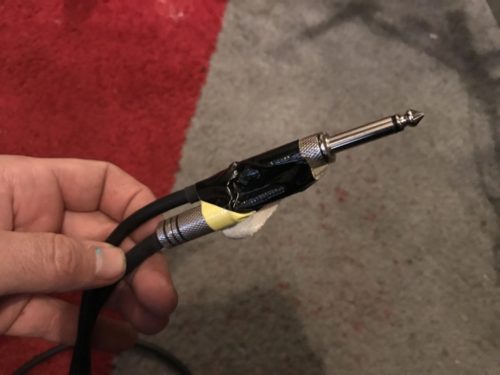
So what the fuck is that and why did I post a picture of it? Well, the BB-4 bass isn’t excellently shielded and I was playing in front of a flat screen computer monitor and powered speaker monitors. Something was buzzing pretty bad. I didn’t get rid of it entirely, but I did minimize it. I taped an extra cord to my instrument cable’s ground sleeve, and I… shoved the other end down my pants. Look, it works. Your own flesh helps ground an instrument signal, like when you touch the strings or bridge. I just made sure I was touching it even when I wasn’t actually touching it. Look, let’s just move on to recording vocals, okay?
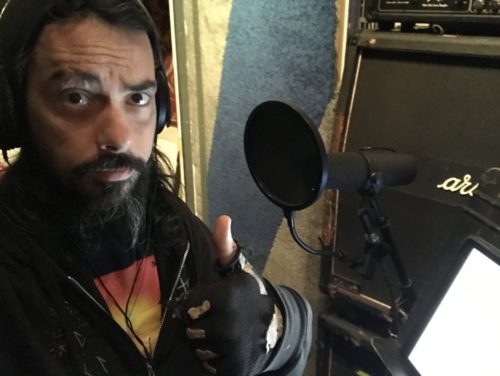
That’s me in the conveniently pre-built isolation booth that we lucked into having when we moved rehearsal rooms. Not everyone is as lucky, but really, some foam and any small room could suffice for death metal. If you’re not recording smooth jazz with tons of dynamics, a lot of the rules go out the window. Still, I try my best, using a pop filter and the excellent Shure SM7-B; it’s the world’s best dynamic microphone. In my opinion, it beats out a shit ton of more expensive ribbon mics in terms of frequency response for some good death metal growls. And there’s a very good device out there that makes it even better…
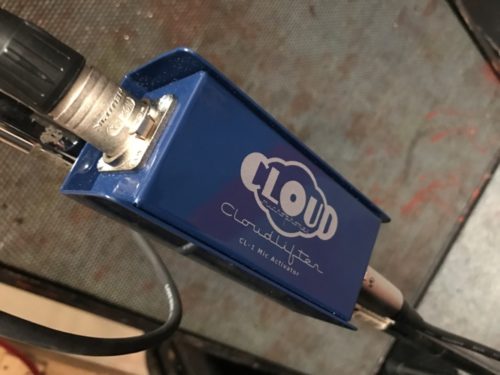
That’s the Cloudlifter by Cloud Microphones. This pantom-powered mic-pre pairs oh-so-well with the low-output SM7-B to create a ton of clear gain. It’s really a difference between night and day and I leapt confidently into recording vocals by myself. That was not a lot of fun, running between rooms and hitting “record”. I stayed up late to do vocals and eventually heard knocking from a room next door to our jam space; yes, there’s people who live in our jam space. Hey man, tough times, and even basically homeless people gotta sleep.
Eventually I finished all my tracking by myself for a soon-to-be internationally released album. I theoretically saved the band hundreds and hundreds of real dollars in studio time. Use your head, collect your gear, and over time, the shit pays for itself. It ain’t scary, it just makes ¢.
